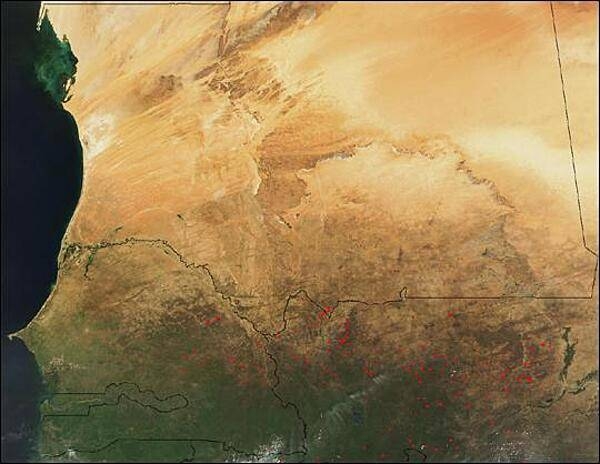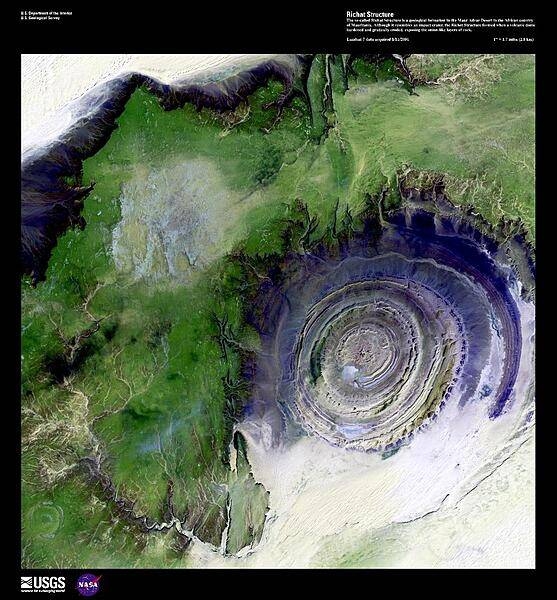Mauritania
Photos
5 Photos
Filter Categories
All
Filters
A remarkably clear satellite image of northwestern Africa vividly displays the extent of the Sahara. To the north are the dark brown Atlas Mountains of Morocco, to the west is the Atlantic Ocean, and to the south is the semi-arid (light brown) Sahelian region. The largely desert composition of Mauritania restricts human settlement. Population centers are mostly confined to the Atlantic coast or along the Senegal River in the southwest. Photo courtesy of NASA.

This satellite photo shows dozens of fires burning in the African countries of Senegal (left) and Mali (right). To the north is the largely desert country of Mauritania. In roughly the center of Mauritania, the dark brown area indicates the location of seasonal lakes and rivers - dry when this October image was snapped. Photo courtesy of NASA.

The so-called Richat Structure, center right in this false-color satellite image, is a geological formation in the Maur Adrar Desert. Compare this image to the true-color photo taken from a spacecraft. Although it resembles an impact crater, the Richat Structure formed when a volcanic dome hardened and gradually eroded, exposing the onion-like layers of rock. Image courtesy of USGS.

The Richat Structure, a prominent circular feature in the Sahara Desert of Mauritania, has attracted attention since the earliest space missions because it forms a conspicuous bull's-eye in the otherwise rather featureless expanse of the Gres de Chinguetti Plateau in central Mauritania. The Structure, which has a diameter of almost 50 km (30 mi), has become a landmark for space shuttle crews. Initially interpreted as a meteorite impact structure, it is now thought to be merely a symmetrical uplift (circular anticline) laid bare by erosion. Image courtesy of NASA.

Deep in the Sahara lies a crater, a nearly a perfect circle that is 1.9 km (1.2 mi) wide, and sports a rim 100 m (330 ft) high. The Tenoumer crater sits in a vast plain of rocks so ancient they were deposited hundreds of millions of years before the first dinosaurs walked the Earth. Close examination of the structure has revealed that the crater's hardened "lava" was actually rock that had melted from a meteorite impact.
On this satellite image the crater's outline is unmistakable, yet it does not necessarily look like a crater; the light and shadows make it look more as if someone pressed a giant cookie cutter into the rock. In this image, the sunlight shines from the southeast (lower right), and the bright arc along the northwestern part of the crater is where the crater walls slope up to the rim. Around the perimeter, the relatively steep walls cast dark shadows. Although it resides in ancient rock, Tenoumer is geologically young, ranging in age between roughly 10,000 and 30,000 years old. Photo courtesy of NASA.
